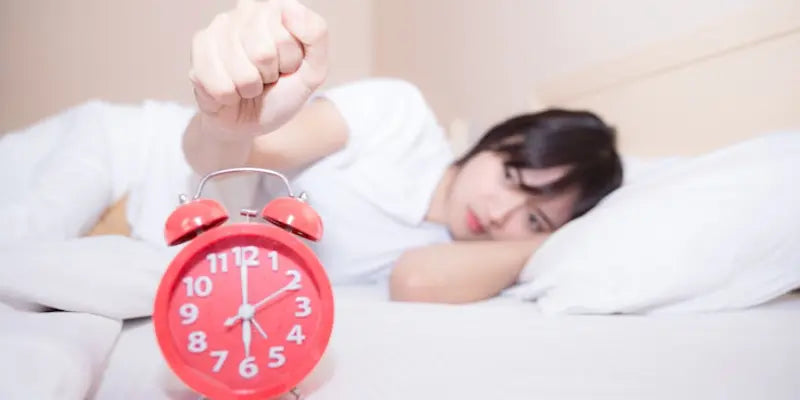
How to Reduce Eye Strain
You've probably noticed that your eyes feel strain, when you spend a lot of time using a computer or other light-emitting devices. At the end of the day you feel your eyes are getting heavier and tired. You can also strain your eyes by reading too much or doing something that requires full focus. In this blog, we’ll learn more about eye strain, what are the symptoms and causes of eye strain and do eye strain cause headaches and other problems.
What is Eye Strain?
Eye strain is a common condition caused by prolonged usage of your eyes, such as when reading, using digital devices, or driving long distances. Asthenopia and eye weariness are other terms for eye strain.
Simple actions can be taken to stop or lessen this issue. See your doctor if those strategies prove ineffective. The way you're feeling could indicate a more serious issue that needs medical attention. This is particularly crucial if you experience headaches or other issues such as:
- Discomfort in the eyes
- Dual vision
- A significant shift in perspective
Eye Strain Causes
When you focus your eyes hard on an activity, it can result in eye strain. Possible causes include:
- Driving a vehicle
- Reading
- Usage of a computer and a phone
- Engaging in video game play
- Carrying out intricate tasks like writing, sewing, or creating
- Not having enough light available to complete a task
- Blinking less often
Eye strain is more common in people who have had previous eye disorders, such as impaired eyesight or imbalanced muscles in the eyes. Eye strain can also be increased by tiredness and stress.
Nowadays, digital strain—a result of utilizing digital devices excessively—is a prevalent issue. You may also get eye tiredness from digital devices since, when using a computer screen, you often blink less frequently. The average person blinks eighteen times every minute. The eyes are naturally refreshed by this. Nonetheless, research indicates that when staring at a computer or other digital device, people blink just roughly half as often. Dry, fatigued, itchy, and burning eyes may come from this.
Eye Strain Symptoms
Eye strain can be hard for you to be productive. The following are the most common signs of eye strain:
- Watery, red, and itchy eyes
- Heavy, hurting, or worn-out eyelids
- Eyesight problems or double vision
- Spasms in the eye or eyelid muscles
- Headaches
- Heightened light sensitivity
- Back, shoulders, or neck pain
Tips to Prevent Eye Strain
Use Proper Lightning
Excessive bright light, such as sunlight flowing in via a window or harsh interior lighting, can induce digital eye strain. Close window drapes or blinds to reduce outdoor light. Reduce interior lighting by utilizing fewer, lower-intensity bulbs and tubes.
If feasible, position your computer so that windows are to your side rather than in front of or behind the screen. Also, if possible, avoid working in bright fluorescent lighting. Instead, use a floor or table lamp to create softer, indirect illumination.
Adjust Your Computer Workstation
Most people sit in front of a computer screen the whole day, mostly due to work. You can make adjustments to your computer screen to prevent eye strain and fatigue. Position your workplace to minimize strain. Be sure to:
- Place the screen directly in front of you, not to the side.
- Position the screen 4 to 5 inches below eye level (measured from the center of the screen) and 20 to 28 inches away from your eyes.
- Use a document holder to keep reference materials at the same height and distance from you as your computer screen. This eliminates the need to shift eye focus when looking from one to the other.
Blink More Often
When we stare at a computer screen, a phone, or any other light-emitting device for an extended period of time, we blink less frequently. This causes dry eyes, fluctuating eyesight, and eye discomfort. To lessen the danger of dry eyes while using a computer, train yourself to blink after every two or three paragraphs on the screen. Also, you can use eye drops available and use it as needed if your eyes become dry.
Use Computer Glasses
When you work for too long on a computer or mobile screen, it can cause digital eye strain strain. If you spend a lot of time in front of a screen, wearing computer glasses or other eyewear can be far more pleasant than using contact lenses, which can dry out from a long computer use. Consider wearing glasses during screen time and contacts for the rest of the day.
Take Frequent Breaks
When you use a computer or mobile too much, it can cause headaches and many other problems. To lessen the risk of computer-related headaches, neck, back, and shoulder pain, get up and away from your screen at least every 30 minutes.
To avoid eye fatigue from constantly focusing on your screen, begin adopting the "20-20-20" rule: Every 20 minutes, take your gaze away from your screen and fix it on something at least 20 feet away for at least 20 seconds. This will help to relax the focusing muscle in your eyes, reducing eye tiredness.
Get Quality Sleep at Night
Like the brain and body, your eyes recover themselves as you sleep. Not getting enough sleep might result in dry, itchy, or bloodshot eyes. A night of little sleep may cause the eyes to produce fewer tears. This increases the risk of eye infections. When you sleep well, your eyes will feel rejuvenated.
If you face difficulty in sleeping, it can make the eye strain worse. There are tips you can follow to sleep well at night. A high quality pillow can help you get better sleep at night and you’ll wake up rejuvenated and refreshed.
Conclusion
If you spend hours a day staring at a computer screen or other screen-equipped devices, you can experience eye strain. Eye strain is a common problem, but you can take steps to reduce your discomfort. You can follow the tips given in the blog to prevent eye strain and take good care of your eyes. If you often experience eye strain, you should consult your doctor.
If you are looking out to buy a good pillow for yourself or your loved ones but are overwhelmed with so many options available in the market. We recommend a memory foam pillow to sleep soundly at night. A memory foam pillow can adjust its shape according to the shape of your head and neck, it not only makes you feel comfortable but also helps with neck and back pain.








